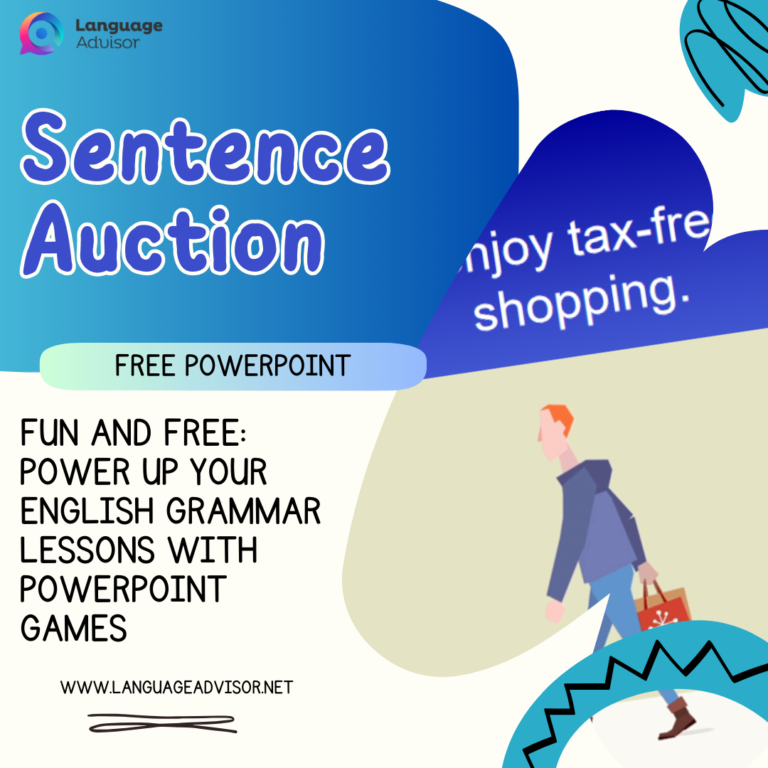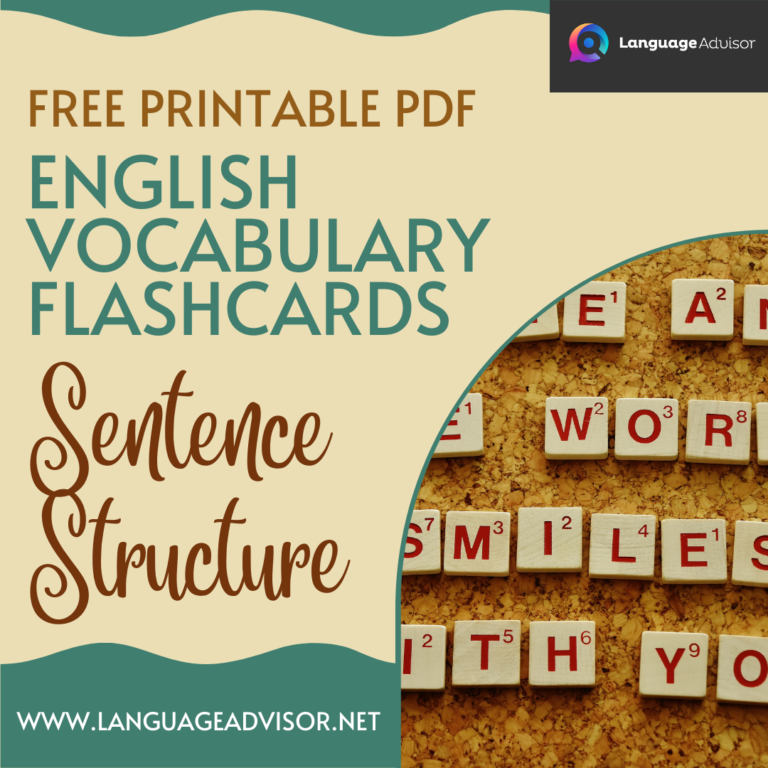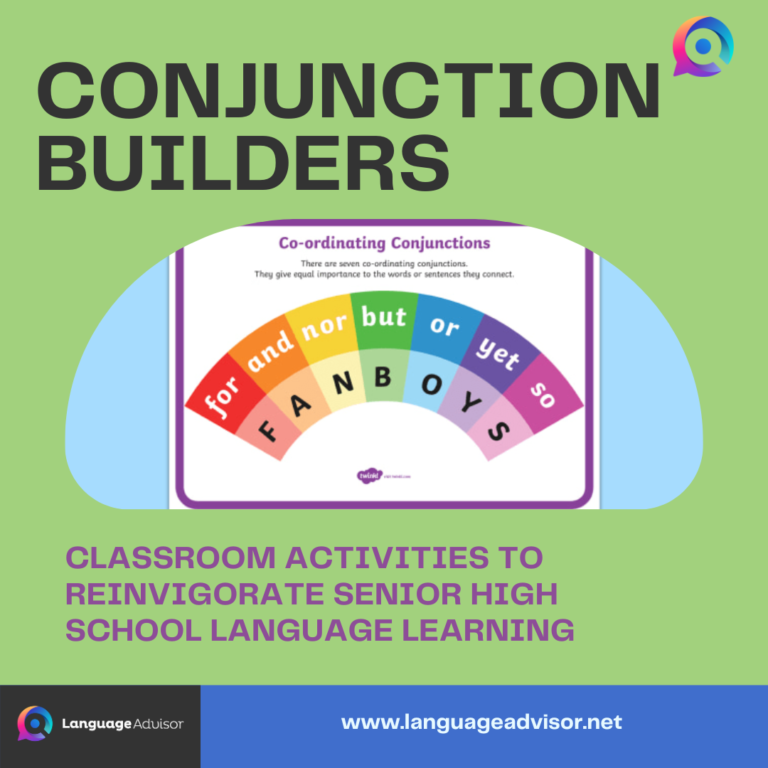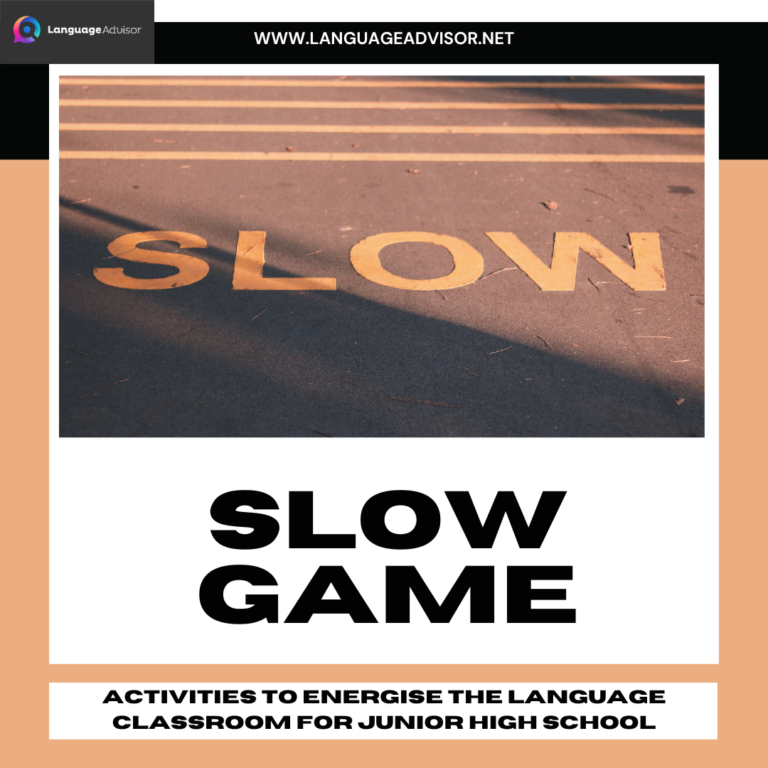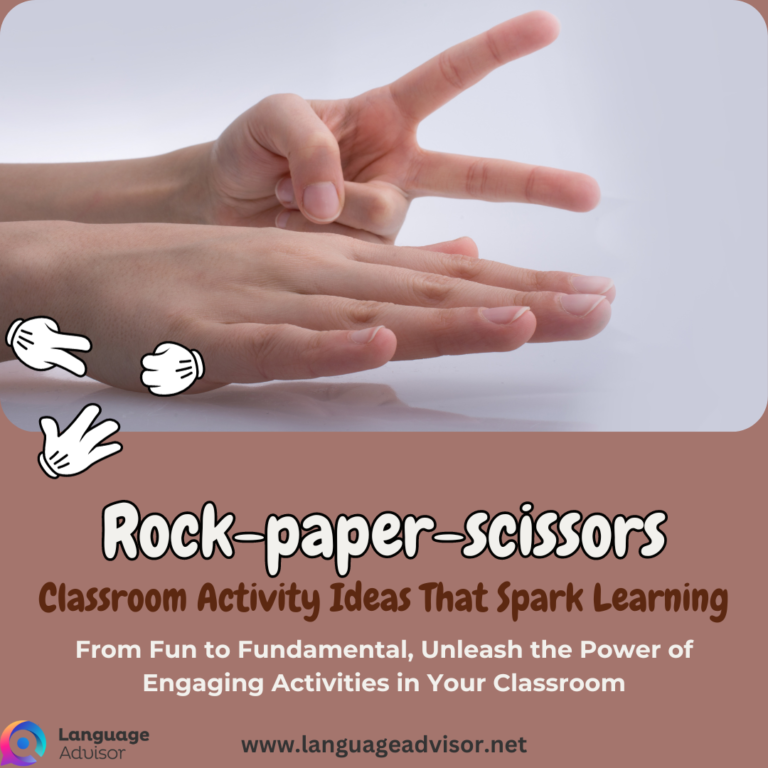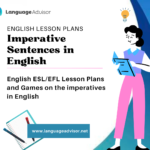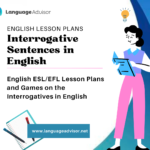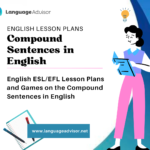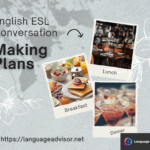All about Making Sentences in English. English ESL/EFL Lesson Plans and Games on Making sentences in English and the Subject and verb Agreement and the Negative Form
All about Making Sentences in English

Lesson plans
Here you can find a wide range of full lesson plans to use in your classroom.
All of our lessons are designed around themes engaging and relevant to English ESL-EFL learners and can be used to complement your school curriculum, giving students an opportunity to develop their English language and skills in motivating and enjoyable ways.
These lesson plans focus on classroom games and activities oriented around meaningful practice of grammar items in English. The vast majority of the activities have been designed to be simple and easy to apply, without requiring much in the way of additional resources or materials. Wherever possible, games have been presented in a way that makes full use of any natural or genuine communicative aspects embodied in the grammar constructions, though while there is emphasis on understanding the grammar and its functional and communicative aspects, most of the games also highlight the importance of using the grammar accurately.
These lesson plans are intended as a starting point for teachers to adapt and build their own stock of in-class games and activities that can be applied relatively quickly and easily.

All about Making Sentences in English
All about Making Sentences in English: Here are ten lesson plans

Pronouns, Adjectives, and Nouns
Objectives:
Students should be able to create simple sentences matching adjectives with nouns, such as: “I am a good student.” This should be easily accomplished if students have been learning the new words presented.
Warm-Up:
Review the adjective vocabulary.
Also Check out this lesson plan: Adjectives and Verbs Grammar Lessons
Presentation:
Introduce the idea by writing on the board the following sentence structures, which use nouns, pronouns, and adjectives:
I am a tall girl.
You are a smart dog.
He is a short boy.
She is a pretty girl.
It is a big house.
We are happy students.
They are fat cows.
Practice:
– Have students create an “I am a _____” sentence using pronouns, adjectives, and nouns they already know.
For example: I am a good student.
– Then have students create a “You are a ______” sentence about you (the teacher), again using words they already know.
For example: You are a nice teacher.
– Have students pick a male from the classroom and create a sentence in the form of “He is a _______.”
For example: He is a bad boy.
– This same process should be repeated with the females in the classroom.
For example: She is a tall girl.
– Have the students create a sentence about themselves writing, “We are ____.”
For example: We are happy students.
– Finally, have the class write a sentence about another class in the school writing, “They are ____.”
For example: They are funny people.
– Once this part of the activity is completed, go around the room and have the students share their written responses, which will give them reading and speaking practice.
Homework:
Students write 7 sentences one for each pronoun and do so using the vocabulary already learned. These sentences should contain pronouns, nouns, and adjectives.


Pronouns and Simple Present Verbs
Objectives:
Students should be able to write simple sentences pairing pronouns with verbs.
Presentation:
– Introduce sentence structure on the board:
I run.
You run.
He/She/It runs.
We run.
They run.
– Make a point to reemphasize the addition of “-s” to the verbs in the third person (i.e. He / She/ It).
Practice:
– Have students write sentences with each verb with each pronoun. This may seem tedious and redundant, but the practice will be beneficial and time consuming.
– Have students read their sentences out loud for practice and to make sure that they have been doing the activity correctly.
Homework:
Give students new verb vocabulary words and have them make sentences with these new words.
1. arise =
2. fall =
3. bend =
4. fight =
5. make =
6. forget =
7. bleed =
8. get =
9. blow =
10. give =
11. build =
12. go =
13. come =
14. grow =
15. dig =
16. hide =
17. do =
18. know =
19. drive =
20. leave =


Subject and Verb Agreement
Objectives:
The students will be able to correctly use verbs in a sentence so that the verbs agree with the subjects used.
Presentation:
– Make sure the students understand that the subject of the sentence must agree with the verb. A singular subject takes a singular verb and a plural subject takes a plural noun.
– Make sure to note that in third person singular the verb must end in a “-s”
Practice:
– Have the students copy down the following sentences and practice with verb and subject agreement. This will also indicate whether or not they understand the concept being taught. Have them identify both the subject in the sentence and then choose the correct verb that agrees with it.
1. The new secretary (begin, begins) work tomorrow.
2. Jim and Frank (writes, write) speeches for their boss.
3. The workmen (replace, replaces) the old copy machines.
4. New people (earn, earns) one vacation day per month.
5. The computer printer (break, breaks) once a week.
6. The school (plans, plan) to remodel.
7. The paper in the copier (needs, need) to be replaced.
8. The office (is, are) open.
9. How many people (work, works) for the government.
10. Here (is, are) the book you wanted.
Homework:
Have the students write 5 to 10 of their own sentences using words they already know to practice working with subject and verb agreement.


Subject and Verb Agreement: Using There + Be
Objective:
The students will be able to have subject and verb agreement in their
sentences when using the words “there” and “be”.
Presentation:
– Review what is needed to ensure subject and verb agreement in a sentence.
– Show the student’s the difference between using the verb phrase “there are” and “there is”
– Ex. There are twenty students in this class.
There is a student in the room.
Note: That often times in informal spoken English some native speakers will use a singular verb even when the subject is plural.
For example: There’s some books on the shelf.
Although this form is frequent it is not considered to be grammatically correct.
Practice:
– Have the student’s copy down the following sentences and choose the correct answers for practice.
1. There (is, are) letters in the mail for you today.
2. There (is, are) mail for you today.
3. There (is, are) a lot of problems in the world.
4. There (is, are) a hole in this sock.
5. There (is, are) over 6,000 insects in the world.
6. How many kinds of birds (is, are) there?
7. There (was, were) an earthquake in Iran last year?
8. Why (is, are) there no water?
9. There (is, are) more men than women in government/
10. There (is, are) my watch.
Homework: Have the students use vocabulary they already know and the new skills learned from today’s lesson to construct 5 to 10 new sentences using there + be correctly.


There is / are – Game
Objective:
To talk about things that can be seen
Practice:
For this game, the teacher needs to collect a handful of different objects and to ensure that there are 1-4 of each and enough things to cater to the number of students in the class. These could be basic classroom items such as pencils, erasers, chalk, markers, rulers, etc., or more elaborate items or even things like animal flashcards. However, the more real the items are, the better.
The teacher then goes around to each student and places one or more of each item on the students’ desks. The teacher also places an object/objects on his/her own desk and starts the rotation game thus:
Teacher: There are erasers on my desk.
Student 1: There are erasers on your desk [points at teacher] and there is a ruler on my desk.
Student 2: There are erasers on your desk [points at teacher], there is a ruler on your desk [points at student 1] and there is a crayon on my desk.
Student 3: There are erasers on your desk [points at teacher], there is a ruler on your desk [points at student 1], there is a crayon on your desk [points at student 2] and there are pencils on my desk.
Student 4: There are erasers on your desk [points at teacher], there is a ruler on your desk [points at student 1], there is a crayon on your desk [points at student 2], there are pencils on your desk [points at student 3] and there is a spider on my desk!
This game is harder than it looks on paper – even though young learners often grasp the difference between ‘there is’ and ‘there are’ relatively quickly, it can take a considerable amount of time before the different forms roll out of their mouths easily.
All about Making Sentences in English


Class island game
Objective:
To talk about things that we know exist
Practice:
This game is called the “class island” game, and involves each student in the class contributing some sort of feature or item to exist on an imaginary island. As each student contributes something, the teacher writes this down on the board. After everyone has finished adding a feature or object, each student attempts to draw the island that has
been created using the vocabulary.
For example:
Teacher: OK class – what things are there on our island?
Student 1: There are flowers on the island.
Student 2: There is a mountain on the island.
Student 3: There are dinosaurs on the island.
Student 4: There is a purple and green butterfly on the island.
A way to make this game more challenging is for the teacher to write these features on a piece of paper rather than on the board for everyone to see.
When students then go to draw the island, they may need to ask fellow students again about the feature/features they added, which creates a good communicative opportunity to utilize the key language naturally. Students could be allocated points based on how many of the named features (in correct quantities according to “there is/are”) are drawn into their pictures. The game can also be applied to other more ambitious projects as well, such as an imaginary city or school.


Subject and Verb Agreement: Some Irregularities
Objective:
Students will be able to understand the concept that not all subjects agree with their verbs in the English language, and that there are exceptions to every rule.
Presentation:
– Review subject and verb agreement, and then explain to the class that some subjects and verbs do NOT agree in the English language.
Practice:
– Have the students copy down the following sentences and choose the correct verb that will agree with the subject given.
1. The United States (has, have) a population of 250 million.
2. The news about Mr. Smith (is, are) surprising.
3. Massachusetts (is, are) a state.
4. Physics (is, are) easy to understand.
5. Statistics (is, are) a branch of mathematics.
6. Fifty minutes (is, are) the amount of time for the exam.
7. Twenty dollars (is, are) a lot of money.
Homework: Have the students study the irregular subjects and verbs so that they have a firm grasp of the rules and exceptions to the rules.


Contractions to form Negatives
Objective:
Students will be able to recognize and use contractions appropriately in the correct context.
Presentation:
– Explain what a contraction is by physically demonstrating what it means to expand and then what it means to contract. Also, define the word contraction.
– Explain what negative and positive means by giving an example:
Ex.
I can play basketball. (+)
I cannot play basketball. (-)
I can’t play basketball. (-)
– Also you might need to explain the use of an apostrophe in a contraction.
Practice:
– The word “not” can be combined with the following verbs to form a contraction that holds the opposite meaning of the original verb.
– List of contractions:
1. are + not = aren’t
2. could + not = couldn’t
3. does + not = doesn’t
4. have + not = haven’t
5. should + not = shouldn’t
*6. will + not = won’t
(note: that this contraction is different)
7. can + not = can’t
8. did + not = didn’t
9. has + not = hasn’t
10. is + not = isn’t
11. was + not = wasn’t
12. would + not = wouldn’t
– Reemphasize that a contraction expresses a negative and that the apostrophe shows that the “o” in the “not” has been dropped.
– For practice have the students change the following sentences to have negative meanings using contractions.
1. Carlos did not go to work today. (did not = didn’t)
2. He has not talked to his friend. (has not = hasn’t)
3. Helen cannot work until 9:00pm. (cannot = can’t)
*4. I will not accept the job. (will not = won’t)
5. Tom does not speak Russian. (does not = doesn’t)
6. The workers have not been wearing their glasses. (have not = haven’t)
7. The people could not get inside. (could not = couldn’t)
Homework:
Have the students write 5 to 10 of their own sentences using contractions.


Simple Declarative Sentences
Objective:
To have the students be able to recognize and construct simple declarative sentences.
Presentation:
– Remind the students what a sentence or rather simple sentence is.
A simple sentence is a group of words that expresses a complete thought.
Ex. Maria works at the store.
– Explain to the class that there are 4 types of Simple Sentences:
1. Declarative
2. Imperative
3. Exclamatory
4. Interrogative
– Teach the class what a Declarative Sentence is. A declarative sentence tells something or declares something. And note that a declarative sentence always starts with a capital letter and ends with a period.
Ex. The school opened in 1950.
Practice:
– Give the students five more examples of declarative sentences and have them point out what is being declared.
1. I work at school.
2. She is tall.
3. You wrote that letter.
4. We played soccer.
5. They ride the bus.
– Have the students practice writing declarative sentences to make sure that they understand. They should write 7 to 10 declarative sentences about themselves.
– Using any sort of English text (textbooks, something you the teacher write, or magazines) have the students find 10 declarative sentences within the texts and then copy them into their notebooks. Again this is a way to demonstrate that they understand what a declarative sentence is.
Homework:
– For homework have the students write one declarative sentence about every member in their family (mom, dad, brothers, sisters, and animals)


Simple Exclamatory Sentences
Objective:
To have the students be able to recognize and construct simple exclamatory sentences.
Presentation:
Presentation:
– Remind the students what a sentence or rather simple sentence is. A simple sentence is a group of words that expresses a complete thought.
Ex. Mike plays the guitar.
– Teach the class what an Exclamatory Sentence is. An exclamatory sentence shows a strong feeling. Also helpful to note that an exclamatory sentence always starts with a capital letter and ends with an exclamation point.
Ex. Call the fire department!
Practice:
– Give the students five more examples of exclamatory sentences so that they can better understand what is meant by a strong feeling.
1. Run quick!
2. Watch out for falling rocks!
3. Put on your gloves!
4. Happy Birthday!
5. Stop, don’t walk!
– Have the students practice writing exclamatory sentences to make sure that they understand. They should write 7 to 10 exclamatory sentences that express strong feelings.
– Divide the class into 5 groups and give each group a different scenario which they will have to write a scenario, a skit, or a dialogue which uses as many exclamatory sentences as possible.
Group 1- A house that is on fire.
Group 2- Someone getting hit by a car.
Group 3- A championship soccer match.
Group 4- A holiday like New Years. (a party)
Group 5- A wedding.
Homework:
– For homework have the students write about a time in their life where they could demonstrate their usage of exclamatory sentences.
Events such as: birthdays, weddings, graduations, births, or tragedies are all good ideas.

All about Making Sentences in English: Also Check out these resources on Making Sentences in English





